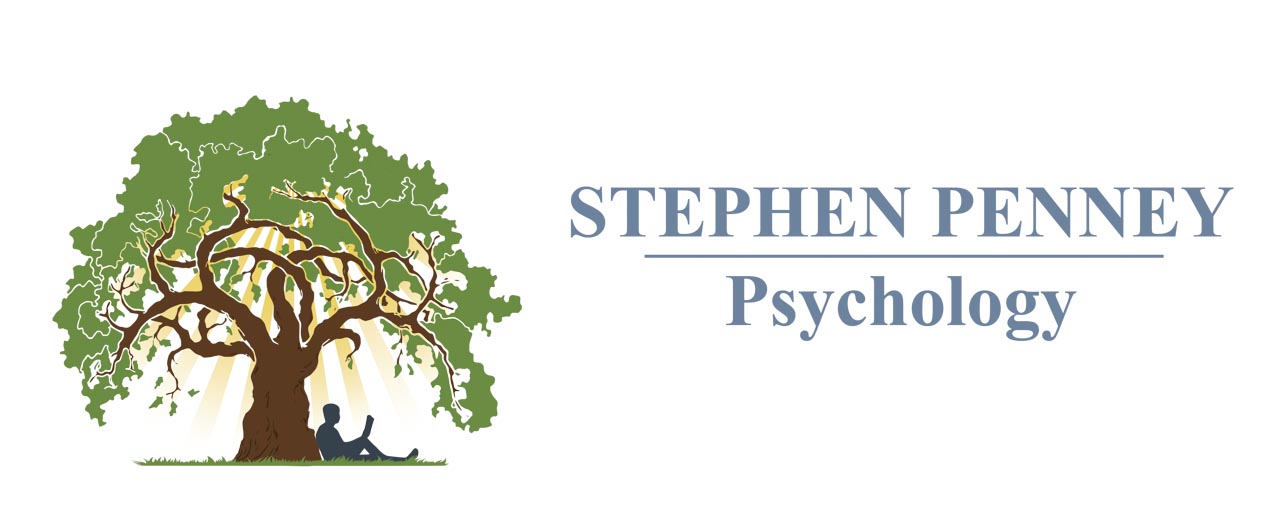The aim of this blog post is to provide more clarity about what child and adolescent therapy is, including information about the different types of therapeutic approaches used, supporting and respecting your child’s process and the importance of proper termination. Please make contact if you would like to talk further about this topic or if you would like to book an appointment for your child.
What is child and adolescent therapy?
Child and adolescent therapy is the process of your child meeting and talking with a therapist to resolve their problems. Therapy can play an essential role in promoting your child’s adjustment and development. We offer individual child or adolescent therapy as well as family therapy.
For individual child and adolescent therapy I generally use “talk therapy” with children from the ages of 12 and older (depending on maturity). Children younger than 12 generally require play therapy where the toys and play can be thought of as an expression of their words and emotions. There is really no “typical” therapy session as there are different methods of treatment for different problems. Your child’s age and maturity, as well as the problem, will help to guide their treatment plan.
Therapy offers a safe space and an empathetic ear while providing tools to bring about change in thoughts, feelings and behaviours. Just like adult clients, child clients receive emotional and goal support in their sessions. They can focus on resolving conflict, understanding their own thoughts and feelings and on thinking of new solutions to their daily problems. It is important that their feelings and thoughts are acknowledged and validated, that they are reassured that they will be supported to work through their problems which provides hope, and that they are given appropriate and healthy coping resources or strategies.
You can expect that your child’s therapist will be someone who supports them (as well as the parents and family if need be), listens attentively, models a healthy and positive relationship experience, gives appropriate feedback and follows ethical guidelines. Good therapy should be tailored to your child and his or her experiences.
What therapeutic approaches do we use?
All of our therapeutic approaches are widely researched, evidence-based and empirically supported. These approaches include:
- Cognitive Behavioural Therapy (CBT)
- Schema therapy (ST)
- Attachment Based Therapy (ABT)
- Attachment Based Family Therapy (ABFT)
- Dialectical Behaviour Therapy (DBT)
- Parenting skills
Cognitive Behavioural Therapy (CBT)
CBT helps children manage their problems by exploring the links between thoughts, emotions and behaviour. It is a directive, time-limited, present-focused, structured approach used to treat a variety of issues such as phobias, addictions, eating disorders, anxiety, anger, trauma and depression. Psychotherapists use CBT to help children identify and change dysfunctional patterns by helping to develop more adaptive thoughts and behaviours. CBT aims to break that cycle by changing the way the patient thinks or behaves.
A psychotherapist using CBT may help the patient identify unhealthy thought patterns that contribute to mental health problems. A therapist may ask a series of questions and ask a patient to keep a thought record to help identify dysfunctional thoughts. Adolescents often develop distorted core beliefs about themselves. CBT helps confront and modify those distortions. For example, an adolescent who believes he is unworthy may always look for evidence that reinforces this belief. For example, if he gets a bad grade on a test, he may think it’s because he is not good enough.
A psychotherapist using CBT may help an adolescent to challenge negative assumptions with a behavioural experiment. For example, the adolescent who thinks she is socially awkward might challenge herself to strike up a conversation with five new people. If she experiences some success, her belief that she is socially awkward might not be as strong.
Schema Therapy (ST)
Schema Therapy is usually a medium to long-term therapeutic process that assists mainly with self-concept and personality related difficulties as well as conditions such as depression, anxiety and trauma.
According to this technique, difficulties arise out of a frequent frustration of emotional needs, most significantly during the childhood and early adolescent years. This frustration, and depending on the young person’s temperament, may cause Early Maladaptive Schemas (EMS), where schemas can be thought of as unconscious emotional and thought memory patterns. One example of an EMS is the engrained feeling and knowledge of feeling like a failure. The emotional pain and thoughts linked to these schemas causes the young person to develop coping mechanisms, usually fight, flight or freeze.
As an adult these EMS’s remain dormant but may be triggered in situations that remind the person of the schema causing pain as the general memory pattern is re-experienced. Coping methods used as a child are generally carried through to adolescent and adult years as well. While the coping was adaptive and needed as a child, it now becomes a way of behaving and maladaptive. Treatment involves cognitive, experiential and behavioural interventions to diminish the schemas and coping methods. Work is done with childhood and early adolescent memories as well as current cognitive and behavioural functioning.
Attachment-Based Therapy (ABT)
Attachment-based therapy is an approach to therapy that specifically targets those thoughts, feelings, communications, behaviours and interpersonal exchanges that a person may have learnt, either to suppress and avoid or to amplify and overemphasise because of early attachment experiences.
An attachment-based approach to therapy looks at the connection between a young person’s attachment experiences with primary caregivers, usually with parents, and their ability to develop normally and ultimately form healthy emotional and physical relationships as an adult. Attachment-based therapy aims to build or rebuild a trusting, supportive relationship that will help prevent or treat anxiety or depression and centers on expressing emotions.
Those who may benefit from attachment-based therapy include, but are not limited to, adoptees, children in foster care, children of depressed mothers, victims of trauma such as children of divorce or children and adolescents who have otherwise been mistreated in some way on a regular basis.
Attachment-Based Family Therapy (ABFT)
Attachment Based Family Therapy (ABFT) focuses on the interactional patterns between family members and the roles each family member plays in the family. If these roles and patterns are unhealthy, they can cause anxiety, conflict and unhappiness in a child. When a child or adolescent is struggling, it affects the entire family. We support and encourage the whole family to communicate effectively and find solutions together. With a respectful, solution focused, goal-directed approach, we collaborate with parents to work toward the best outcomes for your family. ABFT has been shown to be helpful in treating adolescents who are depressed and/or thinking about suicide, but is not limited to this issue.
ABFT comprises 5 tasks:
- Relational reframe task where a new focus and perspective is discussed, this being on building respectful, trusting relationships with less emphasis on blaming any particular individual.
- Adolescent alliance task where the therapist builds trust with the child or adolescent and prepares them for the attachment task.
- Parent alliance task where the therapist builds trust with the parents and hears their childhood experiences of attachment and current stressors in their lives. They are also prepared for the attachment task, including being taught empathic listening or holding skills to be used during the attachment task.
- Attachment task is a three step process where firstly the child or adolescent discloses their grievances to the parents and the parents use empathic listening to hold them. Secondly the parents disclose their side of the story and their shortcomings (drawing from the parent alliance task) and thirdly the adolescent or young adult expresses their reaction to their parents’ disclosure. A dialogue then usually unfolds facilitated by the therapist.
- Promoting competence task were the child or adolescent is encouraged by parents to develop more independence, using the newly found attached relationships as a resource. The child or adolescent is encouraged to take more responsibility for actions and to stop blaming their parents.
Dialectical Behaviour Therapy (DBT)
DBT treatment is designed to help with extreme emotional instability called emotional dysregulation, the inability to manage intense emotions. Dysregulation leads to impulsive, self-destructive, or self-harming behaviours. The goal of DBT is to teach adolescents techniques to help them understand their emotions without judgement and also to give them skills and techniques to manage those emotions and change behaviours in ways that will make their lives better. DBT for adolescents involves individual therapy and group skills training, where parents and teenagers learn together.
DBT skills training for adolescents, is very structured and consists of five modules:
- Mindfulness skills: Being present in the moment and understanding the signs of unregulated emotions.
- Emotion regulation skills: Coping with difficult emotions more positively, and learning strategies to protect children from experiencing emotional extremes.
- Interpersonal effectiveness skills: How to interact more efficiently with others, and feel more supported by others.
- Distress tolerance skills: Being able to recognize impulsive urges that can be harmful, and learning how to control them.
- Walking the middle path skill: Parents and adolescents learn how to validate one another, how to compromise and negotiate, and to see their other’s side of things.
Parenting Skills
Parental guidance is the sharing of information and skills with the aim of improving your relationship with your child. It is also a form of therapy as you will need to understand your strengths and limitations as a parent in order to help yourself and your child. We help with parenting issues and provide solutions.
Our main focus is based on “good-enough parenting” and teaches parents how to meet their child’s core emotional needs. The core emotional needs of a child include secure emotional attachment to a caregiver, expression of emotions and needs, assistance with emotional regulation and behaviour modulation, opportunity for spontaneity, playfulness and creativity, and assistance building a sense of competency. Your relationship with your child has an important and far-reaching impact on your their future psychological, physical, social and emotional health.
How do I support and respect my child’s therapy process?
When you collect your child from therapy you may want to ask them questions. It is fine to ask general, low key questions but we do not recommend asking for details and stop if the child does not want to answer. This respects the therapy time as the child’s private space. Please note that it generally helps your child to have a consistent time and day to come to therapy as it helps to create a sense of security and routine.
Why is the therapy termination process so important?
Ending therapy is a very important part of the therapeutic process. The therapist and the child ideally need one to three sessions to reflect on the therapeutic process and prepare for ending therapy. Some children need a lot of careful support and preparation to help them feel ready to end therapy. If you would like your child to finish therapy, please let us know so that we can prepare to end the therapy process with your child.


Recent Comments